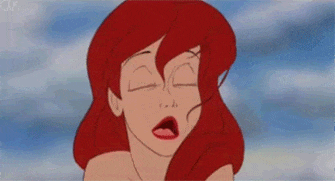From the beginning, YouTube has been an amazing and free place for creators and viewers to enjoy video content. So, when YouTube Red (a YouTube description for $9.99/month) was introduced, loyal YouTubers and subscribers were pretty confused. (We’ve already got Netflix and Spotify, was this another monthly fee we had to get to keep up with our favorite creators and content?)
First, let me explain what YouTube Red entails.
With a monthly YouTube Red subscription, all the ads go away. No previewing ads, nothing on the sides, none of those pesky pop-up ads on the bottom. You also get to stream music. So basically, they are adding something that is going to feel like Spotify/Pandora.
You will be able to keep videos on the background of your phone. For those of you who may not be quite as obsessed with YouTube as I am, this may not seem like a big deal. But those of you who feel my pain are probably rejoicing at this idea. Being able to keep videos playing in the background means that you can go check a text message, scroll through Facebook, or take a Snapchat without having to stop the sound of the video you are watching (something that, if you don’t deal with this issue, trust me, is super frustrating.) YouTube Red would also let you download for temporary use (like if you were going to be on an airplane, headed somewhere you know will cause you to have poor connection).
And all this stuff sounds great! But not exactly necessary if you don't want to pay the extra $10 a month. The real controversy is over the fact that with YouTube Red, some of the content by your favorite creators might become exclusive to only those who have YouTube Red. You can see why this would cause concern for people who are loyal fans to YouTubers, but might not be able to afford an extra $120 a year to watch this extra content.
So why even do this, if YouTube Red could quite possibly create an odd hierarchy of subscribers--those who can afford the YouTube Red subscription, and those who can’t?
YouTube Red, and the money it creates, would be great for creators in that they can use the money from YouTube Red to make more money themselves (as some people make videos as a profession) and make videos that are more like television shows, which would cost more to produce. While YouTube, yes, has been able to boast on the fact that it has remained free from the beginning, the values of YouTube are also very focused on helping creators make the things they imagine and grow the communities they create, which is something the paid subscription would allow to increase and expand. But other than these new videos, YouTube will remain pretty much the exact same.
The money from the YouTube Red subscriptions, in the same way ads were treated, will be distributed between the creators and YouTube. (After the cost for running the server, creators get 55 percent and YouTube gets 45 percent). However, although YouTube Red will be better for creators in terms of getting paid rather than simply relying on their cut of the money made through viewers watching ads (which isn’t very much at all), the best way to support a creator you love is directly. Lots of YouTubers have Patreon pages, where you can support their work through donation, or offer merchandise they make themselves. Donating or buying directly from them gives the creator way more money than subscribing to YouTube Red or sitting through the ads.
So, while it might be frustrating not to be able to see the content created on YouTube Red, not having it is not necessarily going to change your viewing experience. And it can only benefit YouTubers. Even though there are some concerns, YouTube is a young social media platform, and we are getting to watch it grow, which I think all people who love the site, paying subscribers and not, are excited about.
For more information, watch the videos that helped inspire this article here and here.
















































